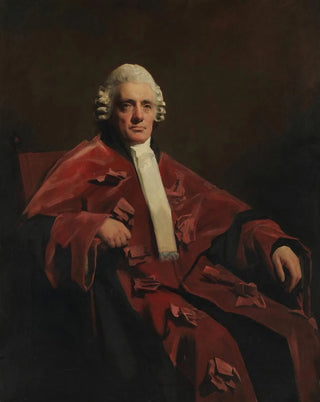Art print | William Robertson 1753-1835 Lord Robertson - Sir Henry Raeburn


View from behind

Frame (optional)
In the world of art, some works transcend their era to become timeless witnesses to human history. The art print William Robertson 1753-1835 Lord Robertson - Sir Henry Raeburn, for example, is much more than a simple portrait; it embodies the very essence of Scottish nobility from the early 19th century. Delving into this piece, one is immediately transported into a universe where dignity and prestige blend with profound humanity. Sir Henry Raeburn, master of the portrait, manages to capture not only the physical appearance of his subject but also his character and essence. This painting, through its penetrating gaze and confident posture, invites us to explore the life of Lord Robertson, a man whose influence marked his time.
Style and uniqueness of the work
Raeburn's style is distinguished by its realistic approach and masterful use of light. In this art print, the play of shadows and highlights creates an almost tangible atmosphere, making the character of Lord Robertson both accessible and majestic. The color palette, dominated by rich and deep tones, evokes a certain gravity while highlighting the stature of his subject. Raeburn, with his unparalleled talent for texture, manages to bring life to the fabrics draping Lord Robertson, making each fold of his garment as vibrant as his expression. This portrait does not merely depict a man; it tells a story, that of a man engaged in his time, aware of his role in society. The balanced and harmonious composition invites the viewer to linger on the details, to discover the subtleties that make this work a masterpiece.
The artist and his influence
Sir Henry Raeburn, born in Scotland, is one of the most respected portraitists of his time. With a style that combines finesse and power, he captured the spirit of his contemporaries, transforming each portrait into an exploration of human personality. Raeburn managed to establish himself in an evolving artistic environment, where romanticism was beginning to take precedence over neoclassicism. His influence is not limited to his era;

Matte finish

View from behind

Frame (optional)
In the world of art, some works transcend their era to become timeless witnesses to human history. The art print William Robertson 1753-1835 Lord Robertson - Sir Henry Raeburn, for example, is much more than a simple portrait; it embodies the very essence of Scottish nobility from the early 19th century. Delving into this piece, one is immediately transported into a universe where dignity and prestige blend with profound humanity. Sir Henry Raeburn, master of the portrait, manages to capture not only the physical appearance of his subject but also his character and essence. This painting, through its penetrating gaze and confident posture, invites us to explore the life of Lord Robertson, a man whose influence marked his time.
Style and uniqueness of the work
Raeburn's style is distinguished by its realistic approach and masterful use of light. In this art print, the play of shadows and highlights creates an almost tangible atmosphere, making the character of Lord Robertson both accessible and majestic. The color palette, dominated by rich and deep tones, evokes a certain gravity while highlighting the stature of his subject. Raeburn, with his unparalleled talent for texture, manages to bring life to the fabrics draping Lord Robertson, making each fold of his garment as vibrant as his expression. This portrait does not merely depict a man; it tells a story, that of a man engaged in his time, aware of his role in society. The balanced and harmonious composition invites the viewer to linger on the details, to discover the subtleties that make this work a masterpiece.
The artist and his influence
Sir Henry Raeburn, born in Scotland, is one of the most respected portraitists of his time. With a style that combines finesse and power, he captured the spirit of his contemporaries, transforming each portrait into an exploration of human personality. Raeburn managed to establish himself in an evolving artistic environment, where romanticism was beginning to take precedence over neoclassicism. His influence is not limited to his era;






